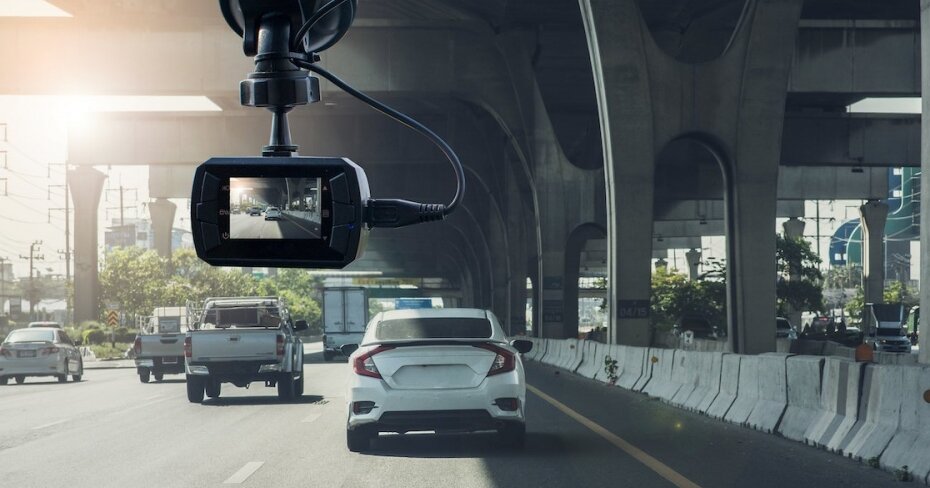How dash cams are changing auto insurance
By: Jessica Mach on September 11, 2019
Justin Leung was driving through Toronto’s Corktown district on the Friday before Canada Day when he was hit by an electric bike.
Leung was driving a car, on his way to a cottage that he had rented for the long weekend with his fiancée and friends. The road was relatively empty for a Friday afternoon: Leung coasted down Adelaide Street for at least a block before passing by another car, which had curiously paused in the lane to his right even though the light was green. Suddenly, an e-bike driver, who had been riding in the bike lane to the right of the paused car, made a sharp left turn, driving directly into the side of Leung’s vehicle.
One of the reasons I can describe the accident in detail is that Leung had previously described it to me. The other reason is that I saw the accident myself. I wasn’t there, but Leung had a dash cam — a feature that came with his car when he first got it, and that he made a habit of turning on every time he drove.
The accident took place in the short span of six seconds, so the resulting footage — which can be watched over and over again — was helpful for clarifying what exactly happened. But the footage served another purpose too, one that ultimately saved Leung a lot of grief: it helped his insurance company determine that he was not at-fault for the accident.
The decision was a significant one. In Ontario, according to Malcolm Armstrong, personal lines manager at Nacora Insurance Brokers in Mississauga, Ont., e-bike drivers qualify as pedestrians. And “99% of the time,” in an accident that involves a driver and a pedestrian, the driver is deemed at-fault.
Dash cams can save you from being labelled “at-fault”
In addition to deciding that Leung wasn’t at-fault for the accident, however, the insurance adjuster on the case also ruled that Leung could continue receiving a discount on his auto insurance policy — one that was based on his claims-free history. The decision was based on both a police report and the dash cam footage that Leung provided. Which brings us to the question: could dash cams change the trend of vehicles being overwhelmingly deemed at-fault anytime they’re in an accident with pedestrians?
Armstrong thinks the possibility is there. Insurance adjusters typically consider dash cam footage to be reliable evidence, so if a camera were able to capture proof that a pedestrian hit a vehicle — and not the other way around — an adjuster likely wouldn’t rule in favour of the pedestrian.
“I’m quite sure insurance companies would welcome [dash cam footage] because it’s going to help their case, make their case stronger,” he says, adding that he “can’t think of” any other type of evidence that bears a similar level of reliability. Witnesses could help, he explains. But they probably wouldn’t be able to do enough to turn the trend around.
But dash cams can’t save you from a lawsuit
Still, Armstrong says it’s important to remember that just because your insurance company says you’re not at-fault, it doesn’t mean that you’re immediately off the hook. Once the claim has been settled, the other party in the accident can still sue you. In a case where one party is a pedestrian and therefore unlikely to have insurance, the driver’s insurance company is still required by law to pay the pedestrian accident benefits, which includes compensation for supplementary medical care, funeral expenses and an allowance if they can’t work as a result of the accident.
If the pedestrian wants compensation beyond accident benefits, which can include but isn’t limited to money for pain and suffering (a type of compensation that puts a price on the mental and physical toll of the accident), they can file a lawsuit against the driver. And while the driver’s no-fault status with their insurance company could help their case, there’s no guarantee that the result of the court case will work entirely in their favour.
In the end, Leung’s insurance company has put out at least $10,000 to cover the cost of his car repairs, as well as the price of a temporary rental.
Leung, for his part, believes that Ontario needs to change its insurance laws — at least when it comes to some pedestrians. “He has a bike that doesn’t go above a certain speed,” he said of the e-bike driver who hit him, “but he can still cause damage. I think anything like that that’s on the road [needs to] carry insurance.”
If the e-bike driver eventually does end up suing Leung, though, the dash cam footage can only help his case. No insurance company is “giving you a discount” for installing a dash cam, Armstrong says. But it can help protect you from being penalized for an accident you didn’t start.


